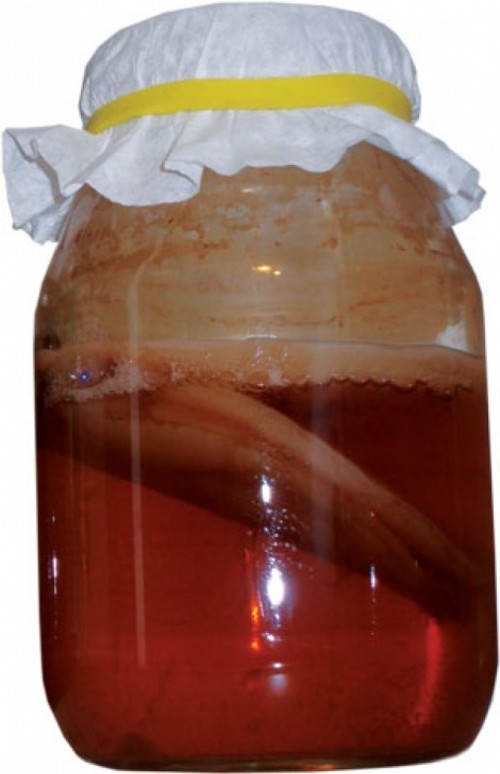Brewing Fermented Kombucha Tea
DIY-otics: Making your own maybe-medicinal tea is simple.
By Austen Diamond“It’s a double-edge sword,” Peebles says. “I’m glad that I’m brewing it more often, but it was sad to see it go because not everyone is going to brew it themselves.” And, despite the less-punchy manufactured reformulations now being sold, many non-brewers don’t realize the benefits of brewing it themselves. It’s easy—a gallon batch takes approximately 20 minutes of actual labor—and, at $3 a bottle for manufactured varieties, avid drinkers can save big.
An acquired taste, kombucha is produced by a symbiotic colony of bacteria and yeast—called a SCOBY—as it eats sugar in tea. While aficionados drink the tea for medicinal purposes, Peebles has her own reasons: “I just feel really energized when I drink it.”
Brewing your first batch requires only a few simple tools and ingredients, including a gallon glass jar, loose or bagged tea (preferably black), sugar, previously brewed kombucha or vinegar, water and a SCOBY.
If you know someone who already brews, procuring a SCOBY is simple. After each batch is brewed, the SCOBY grows an additional layer, which can be separated to begin another batch. If there’s not a brewer in your inner circle, use social networking to broaden the search or try placing a post on FreeCycle.org or Craigslist.org. If all else fails, you can check out The Kombucha Exchange at Kombu.de—a German site dedicated to the international exchange of SCOBYs.
When you have a SCOBY in hand, follow this simple recipe to get started:
Foremost, remember cleanliness is key in any kitchen chemistry. Bring three or so quarts of water to a boil, then remove from heat; some recipes call for one quart, thus making a more concentrated tea, but not this one. Add approximately three teaspoons of loose black tea—or seven tea bags—to the water and let steep for 15 minutes; remove leaves/bags. Stir in one cup of sugar; processed white sugar seems to work the best. Put tea mixture cooled to room temperature to the brewing container, then add two cups of previously brewed kombucha—if you don’t have this, 1/4 cup of distilled white vinegar will suffice—along with the SCOBY. Tightly top the container with a paper towel or coffee filter to keep out dust and fruit flies.
Now, just wait. Usually, six to eight days consistently at 80 degrees will make a crisp, slightly vinegary brew. If temperatures stay lower, the fermentation will take longer, and below 60 degrees isn’t recommended. I brew mine in a glass container with a spout to allow tasting it each day. A fresh SCOBY layer will form on the top of the batch, indicating it’s nearing the end of fermentation. “I prefer to not drink something that tastes like vinegar, so I stop it on the early side,” says Peebles, adding that the younger the batch, the sweeter it turns out.
The last step is bottling. You can use 16-ounce Mason jars; berries or ginger slices can be added for flavor. Letting the tea sit on the counter overnight will allow a quick secondary fermentation and add carbonation. Refrigerated, the bottles will keep for weeks, if not months. Then, you’re ready to start another batch.
Speaking of Drink
-
Sipping Portugal
Vinho Verde is the perfect spring/summer sipper.
- May 10, 2011
-
Wine & Dine
A bounty of local wine dinners in May.
- May 3, 2011
-
Pinot & Pedicures
Tasting Robert Sinskey Wines in the most unusual of venues.
- Apr 26, 2011
- More »
More by Austen Diamond
-
Wasted Space
342 S. State, Salt Lake City
- May 6, 2015
-
Jackalope Lounge
372 S. State, Salt Lake City
- Apr 22, 2015
-
Geeks Who Drink at Piper Down Pub
1492 S. State, Salt Lake City
- Apr 15, 2015
- More »




